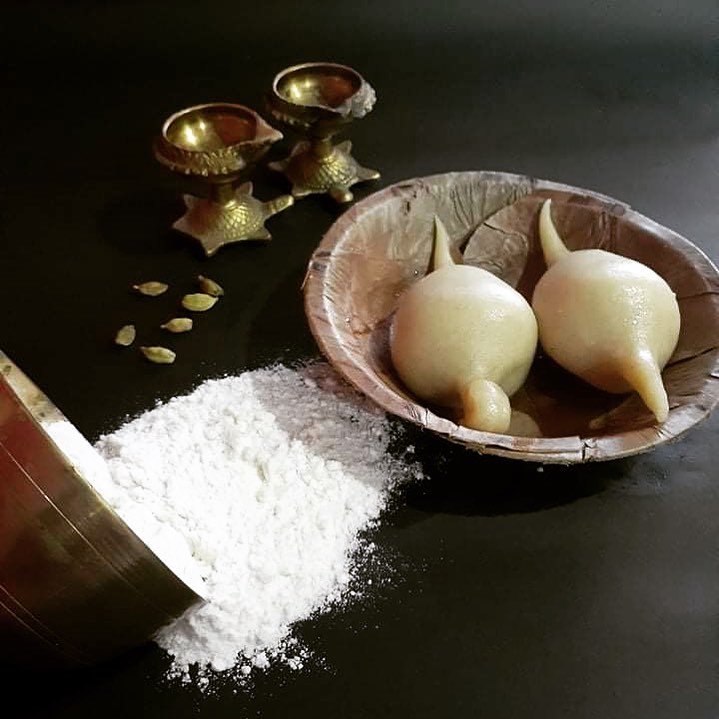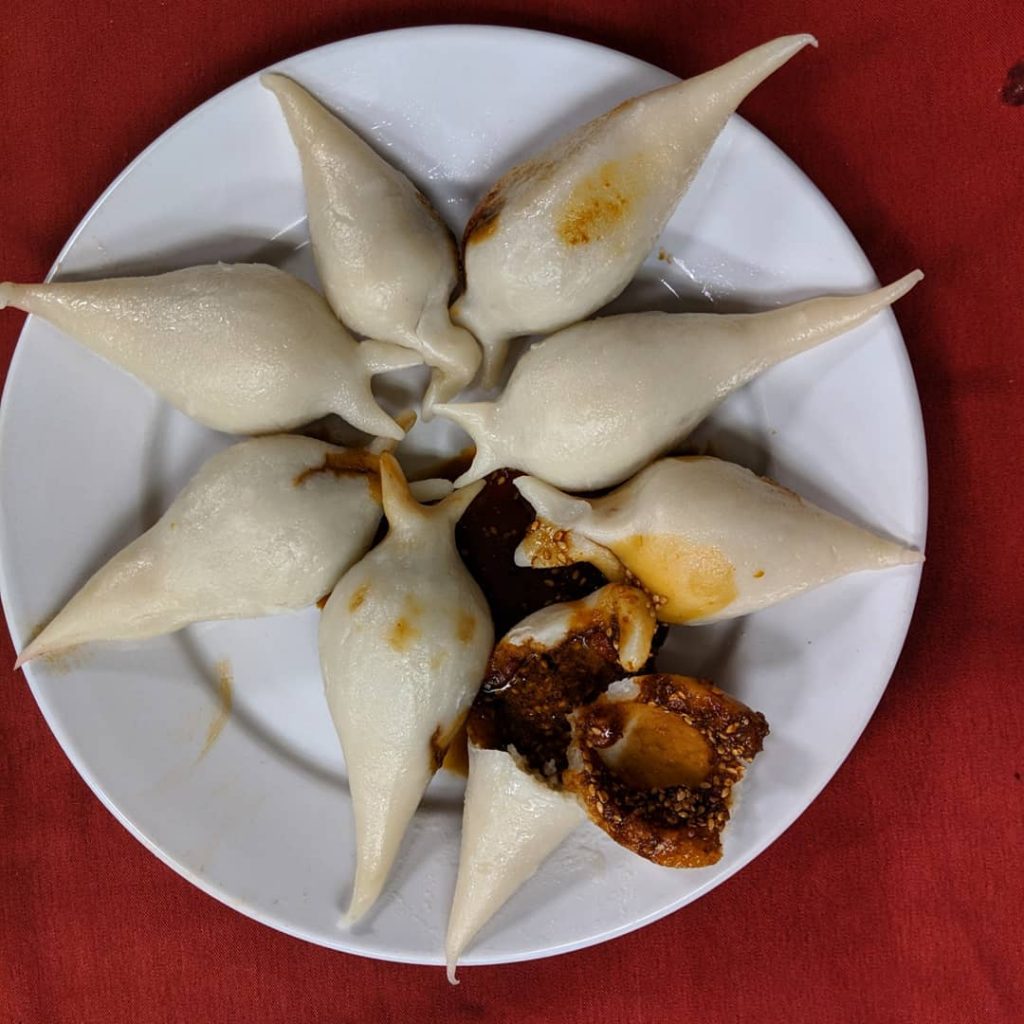Yomari Punhi, also known as Yomari Purnima or Dhane Purnima, is a joyful and popular festival in Nepal. Celebrated by the Newar community of Nepal, yomari punhi marks the beginning of the rice harvesting season.
The word Purnima means full moon in Nepali. Yomari is a special dish prepared on a full moon day that falls on the second month of Nepal sambat. Similarly, the word yomari also has a meaning.
The Newari word ‘Yomari’ is formed by the conjunction of two words, ‘Yo’ and ‘Mari’. ‘Yo’ in Newari means love/ favorite, and ‘Mari’ means bread. Since people loved the taste of this food item, it was named Yomari.
The festival of Yomari Punhi holds a special significance. In this blog, we will learn about the Yomari Punhi festival in detail.
Importance of Yomari Punhi

The tradition of preparing Yomari is one of the crucial parts of Newar culture. According to Newar culture, Yomari Punhi signifies the start of the season of the rice harvest.
There is a tradition of offering the first harvest of rice in the form of yomari to deities. People worship Ganesh, Kuber, Kumar, and Annapurna during yomari Punhi.
It is a way of thanking the supreme gods for blessing us with food grains, and wealth. It is celebrated for four days, during which several rituals are performed by the Newars. Similarly, this festival drives a sense of unity and harmony in the Newar community.
Importance of Yomari in the Newar culture
Not only is Yomari tasty, but it also has several nutritional values. That’s why it is given to pregnant women too. It is believed that the nutrition of yomari is beneficial to the pregnant woman and the child in the womb.
In the winter season, the temperature of the body drops. Since Yomari Punhi falls in the winter season, the weather is perfect to savor yomari. Yomari is believed to have the quality to keep the body warm.
Similarly, yomari is considered auspicious in the Newari culture. Yomari is a mandatory Nepalese food item when a child in a Newar family turns 2, 4, 6, 8, and 12 years of age. Well, not to eat though.
On their birthday, they wear a garland of yomari sewed by their mother. The garland will have the same number of yomari corresponding to the age of the child.
History of Yomari Punhi Festival in Nepal
Yomari Punhi is said to have come into existence in the 6th century. It is believed that the tradition started in Panauti.
A couple from Panauti first prepared yomari from their first rice harvest and shared it with the villagers. It is said that Goddess Annapurna, who was visiting the village in disguise, loved the delicious yomari.
She became so happy that she blessed the couple with wealth and prosperity. Since then, the villagers started a tradition of preparing yomari and offering it to deities.
How is Yomari Punhi celebrated?

Yomari Punhi doesn’t end with just savoring Yomari. This 4-day festival involves several activities, which are as follows.
Celebrated with utmost joy by the Newar community of Kathmandu, Bhaktapur, and Lalitpur, Newar people decorate themselves in their special Newari ethnic attire. The women wear Haku Patasi whereas men wear black dotted Daura suruwal.
They form a group to play Dhime Baja and circulate the neighborhood. During the procession, a few of them sing Newari songs to the tune of Dhime Baja, and the rest of them dance to it.
According to tradition, small children, dressed in Newari clothes, are the ones who dance and go door to door asking for yomari. Then, the owner of the house distributes yomari to the children.
People offer yomari to children because children are considered an avatar of god in the Newar culture. But before offering to anyone, the yomari is first offered to the god.
The first pieces of yomari are dedicated to Ganesh, Kuber, Kumar, and Annapurna Devi. Interestingly, they worship a figure of gods made out of dough.
The yomari with black beans represents Kuber, the god of wealth, the yomari with meat represents Ganesh, and the yomari with chaku represents Mahamaya Devi.
A huge celebration is observed at Dhaneshwor Mahadev temple in Panauti on this day. Similarly, people demonstrate cultural dances wearing masks at Harisiddhi.
Local vendors sell yomari along with other Newari food items in the alleys of Kathmandu, Bhaktapur, and Lalitpur during Yomari Punhi. So, not only Newar, people of all ethnic groups have access to the delicious and mouth-watering Yomari.
There is also a tradition of inviting married daughters to their maternal home to eat Yomari. This tradition is called ‘Nakhatya’.
How is Yomari prepared?
Yomari is a Newari food that is sweet in taste. It has a unique shape and the method of preparing yomari is unique too.
First, boil some water to use to knead the rice flour. Always use hot water as it softens the dough. Add some ghee while kneading. Then, cover the dough with a towel to keep it warm. While you make yomari, boil some water to later use it to steam yomari.
Now, take a small ball size dough and start to roll it in your palm. Rub some oil in your palm so that the dough rolls smoothly. Make sure you make a cone-like structure from that ball.
Then with your index finger, slowly make a hole in the cone. One side of the cone becomes hollow, and the other side has a tail like a sharp pencil.
Now, fill it with chaku paste or khuwa as your preference. To prepare the chaku filler, melt the chaku and add coconut powder and sesame seeds to it.
Don’t stuff the filling too much, or the yomari will burst open while steaming. To close the opening of the yomari, you slowly press the circumference and bring it to the center. It will stick like glue.
Now, lay it down slowly on the steamer. Steam the yomari just like momo in the 3-tier steamer. The steamer has a three-layer. The bottom one is to boil water. After the water boils releasing steam, the tiers filled with yomari are settled one above another. Steam the yomari for 10 minutes and it is ready to be served.
FAQs
What is a Yomari?
A Yomari is a conical-shaped Newari food item that has a sweet taste. The outer skin is soft and white in color, while the chaku filling is brown like chocolate.
When is Yomari Punhi celebrated?
Yomari Punhi falls in December/ January during the winter season in Nepal. It is celebrated in the second month of Nepali Sambat.
Why is Yomari Punhi celebrated?
Yomari Punhi is celebrated by the farmers of the Newar community to offer their first harvest of rice to deities.
At the End
Lastly, Yomari Punhi is a unique and religious festival in Nepal, celebrated by the Newar community. Yomari is a sweet Newari food item that you are highly recommended to try at least once for a distinct experience.
If you want to observe Yomari Punhi, visit Nepal during December-January. Explore the Newari culture and its essence with a closer glimpse.
If you have any queries, kindly leave a comment below.